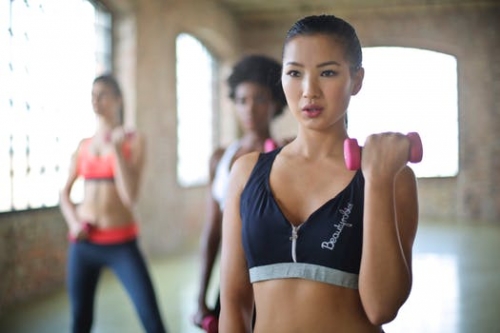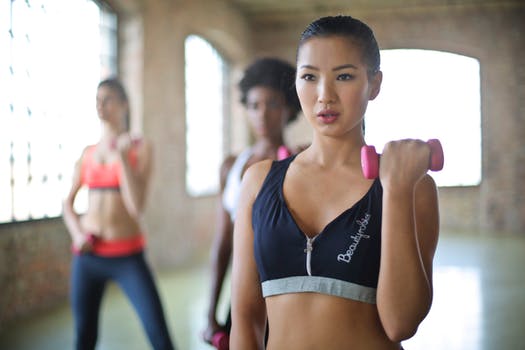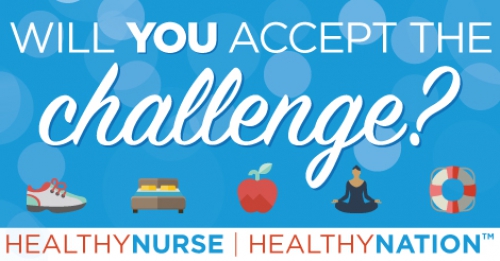Healthy Nurse, Healthy Nation™ Blog - These 5 Inventive Workouts Can Help You Have Fun And Get Fit!
Published
 Joining a fitness class is a great way to mix up your workout, make new friends, and have fun. Even better, because group workouts are led by professionals, an expert can help fix your form and give you pointers. Plus, between the rocking playlists and group camaraderie, these sweat sessions tend to fly by.
Joining a fitness class is a great way to mix up your workout, make new friends, and have fun. Even better, because group workouts are led by professionals, an expert can help fix your form and give you pointers. Plus, between the rocking playlists and group camaraderie, these sweat sessions tend to fly by. Here are some fitness classes you might see at your local gym, boutique fitness studio, or YMCA — and why you should give them a try (after you check with your health care provider, of course):
Battle ropes: During this class, participants team up or take turns whipping, slamming, and pulling, thick, heavy ropes that are anchored to the floor or wall of the gym. You’ll be amazed at the variety of moves and routines instructors think up to safely use the ropes. The workout provides both cardio and strength training (targeting the abs, glutes, back, and entire upper body).
Pilates: Pilates seems similar to yoga at first glance because the exercises are often done on a floor mat. Like yoga, Pilates moves tend to focus specifically on the tiny muscles in the trunk area (abdomen, back, and inner and outer thighs), but the goal of Pilates is strengthening versus stretching. Taking Pilates regularly may improve coordination, flexibility, endurance, and balance. In fact, a study in The Journal of Sports Medicine and Physical Fitness reports that after eight weeks of Pilates, participants had better balance, flexibility, and abdominal strength.
Once you get the mat version of Pilates down, give a Pilates Reformer class a try. It uses a sliding platform with pulleys, springs, and bars to provide resistance and amp up your workout.
Barre: This class is a combination of ballet, yoga, and Pilates moves performed while standing at a ballet handrail or barre (hence its name). Barre classes can help improve posture, define muscles, and increase flexibility. People of all fitness levels can participate because the workout involves doing a number of small movements repeatedly. You don’t have to lift heavy weights or know hard-to-perform moves. You just have to learn the basics and stick with it.
Because the routines often involve leg lifts, avoid shorts, and opt for leggings or slim-fitting stretch pants. Most instructors have participants do the workout in socks, so try your first class in a pair with rubber grips on the bottom. This helps you avoid sliding on the hard wood floor or having your foot slipping off the barre.
CrossFit: If you want to get stronger and also join a supportive community of like-minded people, CrossFit might be for you. Participants rally around each other during workouts and these gyms are known for their encouraging vibe.
At a “box” (what CrossFit gyms are called), there’s a different workout each day. A box doesn’t look like a typical gym. Instead, it’s more like a large garage filled with weighted balls, tires, pull-up bars, rowing machines, and weights.
The “WOD,” which stands for “workout of the day,” can be comprised of lifting weights, performing body weight exercises, running, rowing, or a variety of other functional movements. CrossFit coaches truly welcome people of all shapes and sizes because every WOD can be modified for beginners.
Tabata: These classes are perfect for time-crunched nurses, because they’re short (often 30 minutes or less). The method provides an intense workout — and results — in a minimal amount of time.
Here’s the premise:
- Perform one move (like mountain climbers or burpees) at the highest intensity you can for 20 seconds.
- Then rest for 10 seconds.
- Repeat that sequence for a total of 4 minutes.
- Rest for one minute.
- Start all over again with a different move.
- After 4 or 5 different moves, you’re done.
One class often includes exercises that target different areas of the body, so you’ll get a quick, full-body workout that includes cardio and strength training.
Let us know if you have tried any of these workouts or if you have tried others that you love on Facebook or in our discussion.
Find this helpful? Share this post on social media by clicking the icons to the left.
Source List:
Abbate, E., & Shiffer, E. (2022, May 26). 10 things to know before you take a Pilates class. Retrieved December 8, 2022.
Hughes, L. (2015, February 26). What are barre workouts and are they actually worth doing? Retrieved March 07, 2018.
Kamb, S. A beginner's guide to CrossFit. Retrieved March 26, 2018.
Rosenzweig, F. What is tabata training? Retrieved March 07, 2018.
 Have you joined the Healthy Nurse, Healthy Nation (HNHN) Grand Challenge yet? Join us today!
Have you joined the Healthy Nurse, Healthy Nation (HNHN) Grand Challenge yet? Join us today! Updated 15/7/25
Blog Physical Activity
04/19/2018 1:25pm CDT



Post a Comment or Question